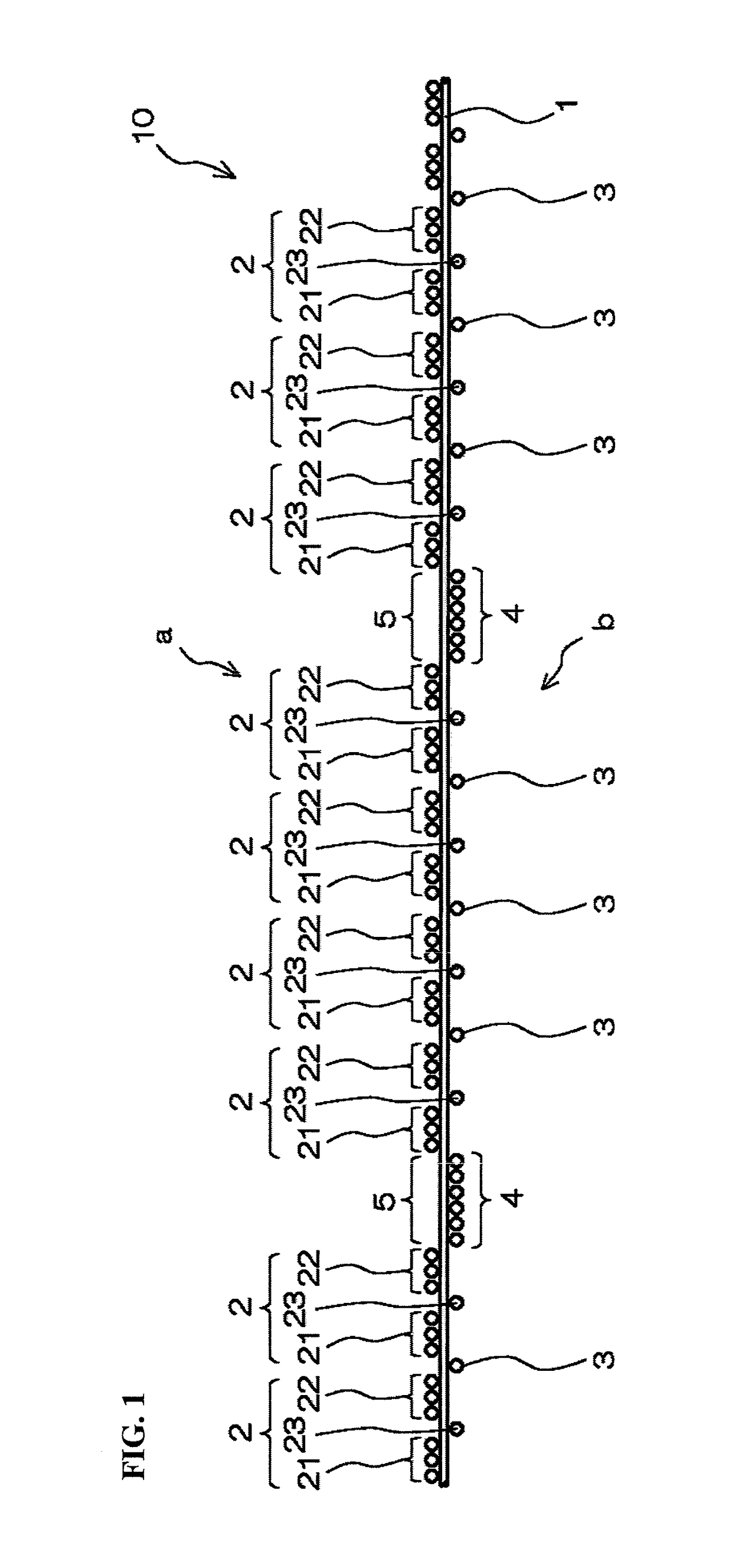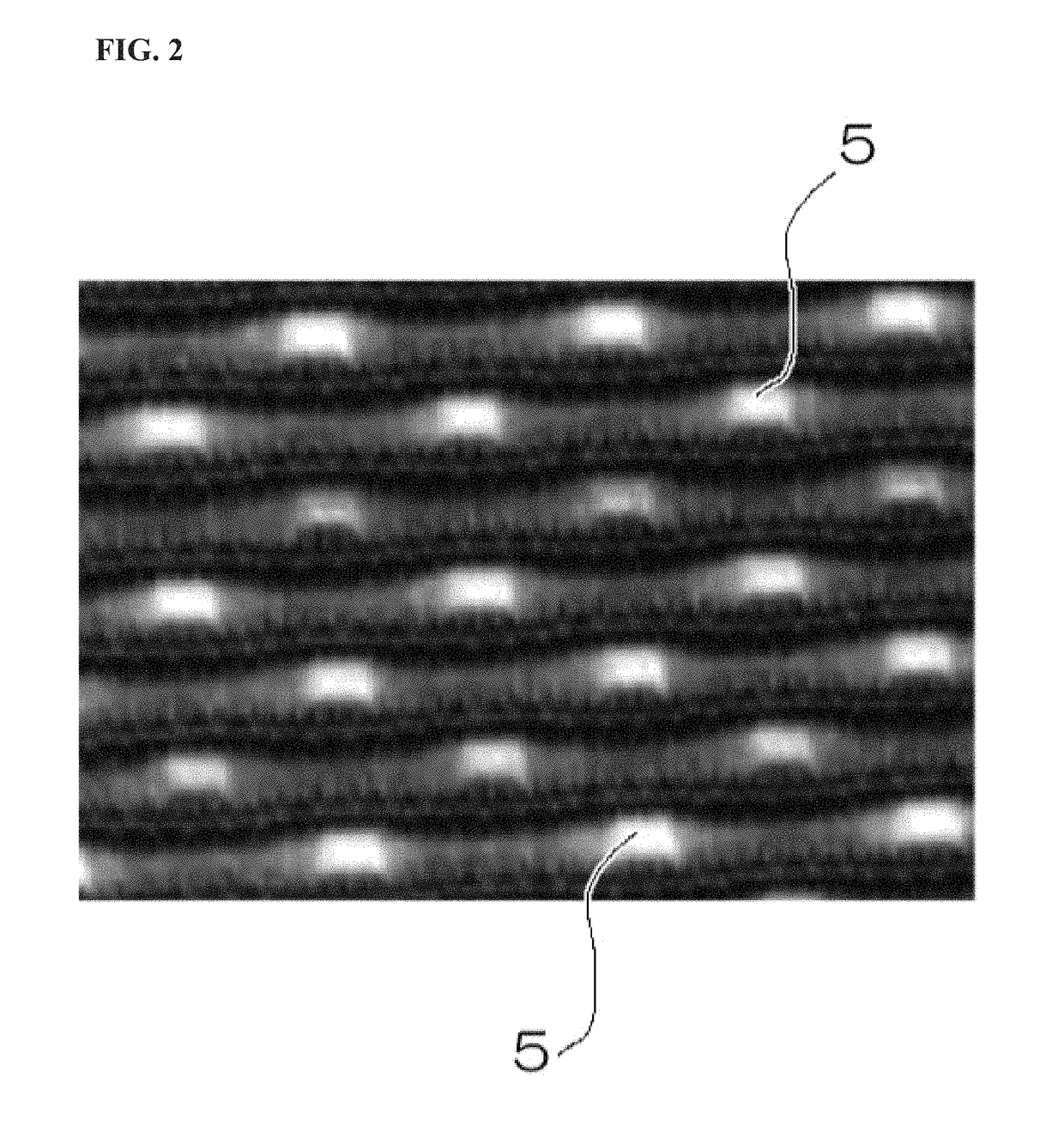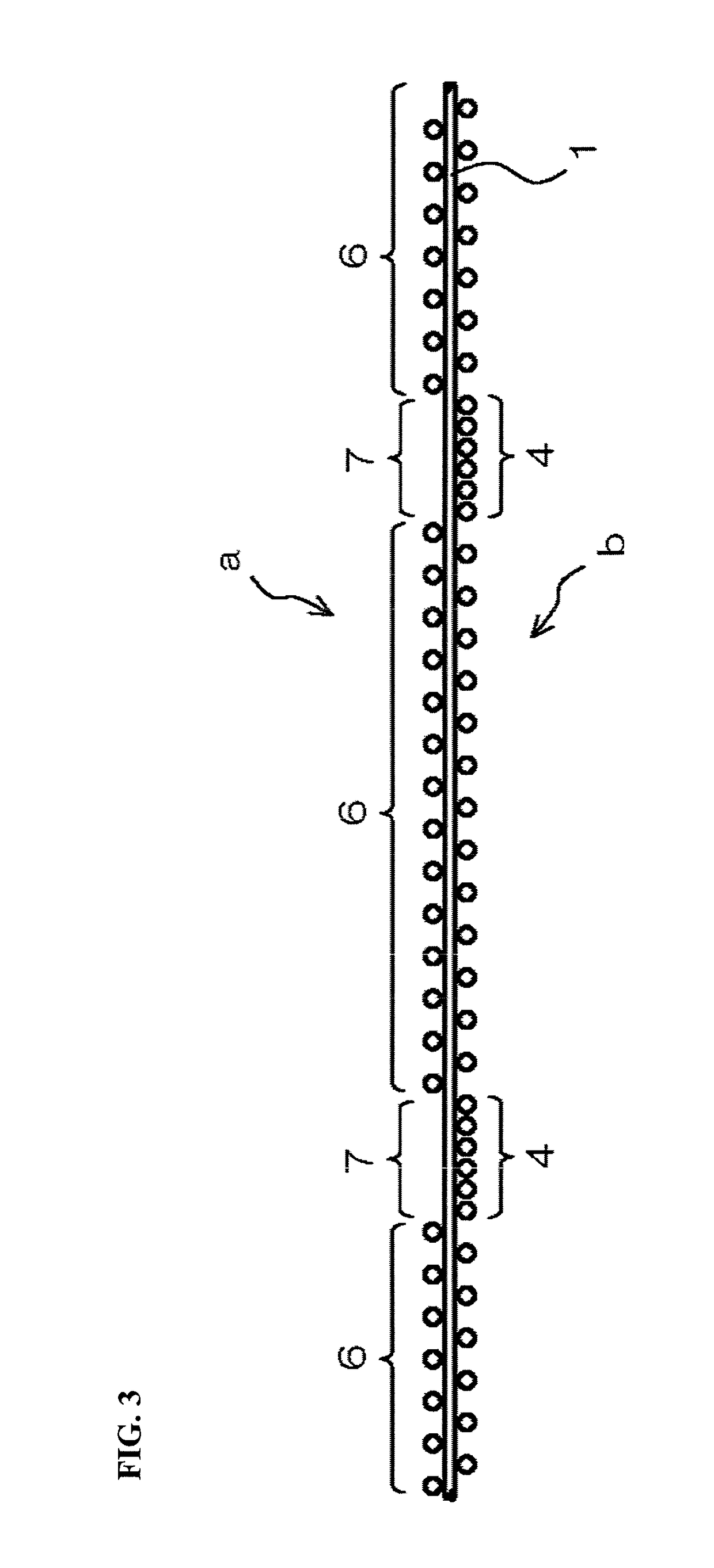Woven fabric
a technology of woven fabric and woven fabric, which is applied in the direction of fibre light guides, lighting and heating devices, instruments, etc., can solve the problems of reducing the designability of woven fabric and indistinct light emission parts, and achieve the effect of reducing the designability of woven fabric and even light emission reduction
- Summary
- Abstract
- Description
- Claims
- Application Information
AI Technical Summary
Benefits of technology
Problems solved by technology
Method used
Image
Examples
Embodiment Construction
[0032]Hereinafter the present invention will be described in detail with reference to the drawings.
[0033]The particulars shown herein are by way of example and for purposes of illustrative discussion of the embodiments of the present invention only and are presented in the cause of providing what is believed to be the most useful and readily understood description of the principles and conceptual aspects of the present invention. In this regard, no attempt is made to show structural details of the present invention in more detail than is necessary for the fundamental understanding of the present invention, and the description is taken with the drawings making apparent to those skilled in the art how the forms of the present invention may be embodied in practice.
[0034]A woven fabric 10 of the present invention is a woven fabric 10 woven from first constituent yarns as one of warps and wefts and second constituent yarns as the other. Also, a part of the first constituent yarns are sid...
PUM
| Property | Measurement | Unit |
|---|---|---|
| friction coefficient | aaaaa | aaaaa |
| diameter | aaaaa | aaaaa |
| diameter | aaaaa | aaaaa |
Abstract
Description
Claims
Application Information
 Login to View More
Login to View More - R&D
- Intellectual Property
- Life Sciences
- Materials
- Tech Scout
- Unparalleled Data Quality
- Higher Quality Content
- 60% Fewer Hallucinations
Browse by: Latest US Patents, China's latest patents, Technical Efficacy Thesaurus, Application Domain, Technology Topic, Popular Technical Reports.
© 2025 PatSnap. All rights reserved.Legal|Privacy policy|Modern Slavery Act Transparency Statement|Sitemap|About US| Contact US: help@patsnap.com



